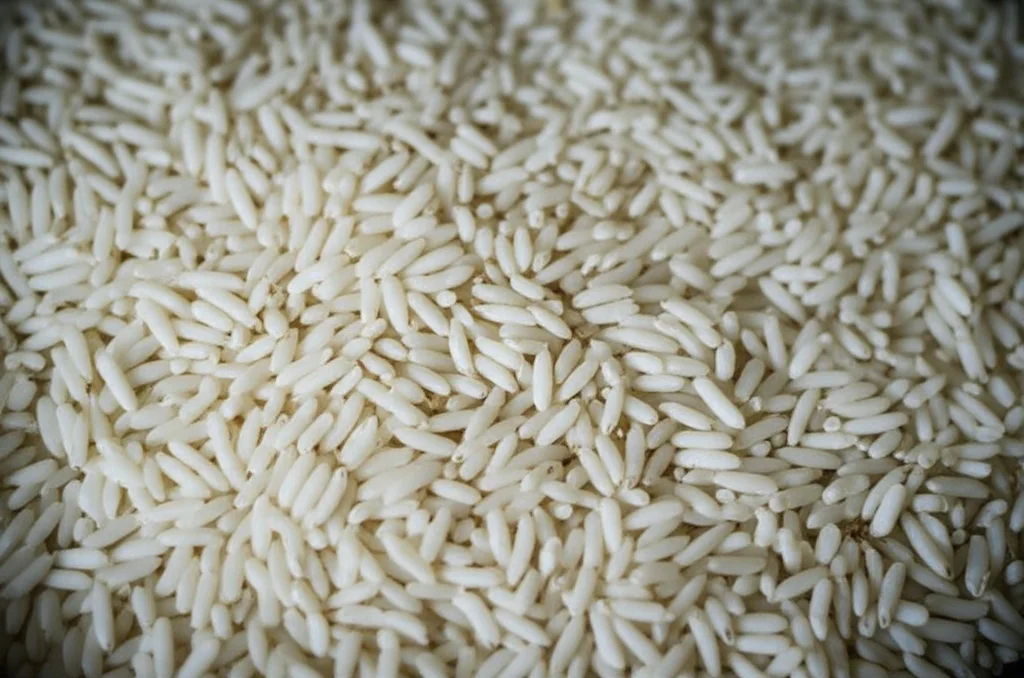Grain Power: How Rice Density e Time Shape Dehumidification
Hey there! So, you know how important it is to keep things dry, right? Especially in places that get super humid. Whether it’s making our homes comfy or keeping industrial processes running smoothly, getting moisture out of the air is a big deal. Usually, we think of air conditioners blasting cold air to do this, which works by making water condense. But honestly, those systems can be energy hogs and sometimes a bit clunky.
That’s where desiccant systems come in! Think of them as moisture magnets. They use special materials that just *love* to grab water vapor right out of the air. They’re often more energy-efficient, smaller, and need less fuss than traditional cooling setups. Sometimes, folks even pair them up with regular AC for a super-powered moisture-busting duo. We’re talking about solid desiccants here – naturally available stuff that pulls in water because of the difference in vapor pressure. Common ones you hear about are things like silica gel (you know, those little packets in new shoes!), zeolite, or alumina.
Now, lots of things can mess with how well these desiccant systems work: what material you use, how the air flows, how you ‘recharge’ the material (get the water back out), and even how tightly you pack the desiccant. And speaking of packing, getting that density just right is key. Too loose, and the air might just zip through without giving up its moisture. Too tight, and you get a big ol’ pressure drop, making it hard for air to flow at all.
Researchers have played around with all sorts of materials – fancy Metal-Organic Frameworks, different gels, and even salts. They’ve looked at single-stage systems, wheels that spin, and static setups. But here’s a thought: what about using something simple, abundant, and natural? Like… rice grains?
Yeah, you heard that right. Rice! While it’s not the first thing that comes to mind for heavy-duty industrial drying (it has a bit of a short lifespan for that), rice grains can actually soak up moisture. They’re great for niche jobs, like keeping grains or spices dry in storage, or even rescuing a dropped phone from a watery mishap when chemicals aren’t a good idea. But how well does it *really* perform? Things like moisture removal rate, efficiency, and how much moisture it can hold haven’t been studied as much for rice compared to other desiccants. And most studies focus on single-stage systems. What happens if you put rice in a *two-stage* dehumidifier? And how does packing it differently affect things?
That’s exactly what we wanted to dig into. We built a test rig – basically, a setup to see how a two-stage dehumidifier using dry rice grains performs when you change how tightly the rice is packed and how long it runs. We wanted to measure all the important stuff: how much moisture it pulls out, how efficient it is, how much energy it uses (sort of, measured by something called COP), and how well the moisture transfers from the air to the rice. We also looked at temperature changes and how the air velocity and pressure changed.
The Rice Dehumidifier Setup: A Simple Idea
Picture a vertical column, kind of like a tall box, made of insulated material. At the bottom, there’s a fan (a blower) that pulls air up through the column. Inside this column, we placed layers of dry rice grains, held in place by steel wire mesh. This creates our two stages. Humid air comes in at the top, gets pulled down through the rice layers, and hopefully comes out drier at the bottom. As the air passes through the rice, the grains adsorb water vapor. This process actually releases a bit of heat, so the air might get a little warmer as it gets drier. The now-drier air is then sent off to wherever you need it.
We measured the air’s temperature, humidity, and speed at the inlet, between the stages, and at the outlet. We also measured the pressure difference across the rice packing. Using these numbers, we could calculate all those performance metrics we mentioned earlier:
- Moisture Removal Rate (MRR): How much water (in grams) the system pulls out per second.
- Coefficient of Performance (COP): A measure of energy efficiency – basically, how much useful heating/cooling effect you get for the energy the fan uses.
- Dehumidification Efficiency: How close the system gets to removing all the moisture it possibly could, compared to the equilibrium state.
- Mass Transfer Coefficient (MTC): How quickly moisture moves from the air into the rice.
We played around with four different rice packing densities, ranging from 1100 to 4390 kg/m³. We also took measurements at different times – 5, 10, 15, and 20 minutes – to see how performance changed as the system ran. The idea was to see how these two factors, density and time, really influenced the dehumidifier’s performance in each stage.

The Nitty-Gritty: How Density Matters
Okay, let’s talk density. We found that packing the rice more tightly generally improved performance… up to a point. As we increased the density from 1100 kg/m³ up to 3290 kg/m³, things like moisture adsorption, MRR, efficiency, and COP all went up. Why? Well, more rice in the same space means more surface area for water molecules to stick to. It also shortens the distance water vapor has to travel to find a rice grain, speeding up the whole process.
But here’s the kicker: when we packed it even tighter, up to 4390 kg/m³, performance started to drop off. It seems there’s a sweet spot. Too dense, and the rice particles get so close together that it actually reduces the accessible spots for water to land on. Plus, those tiny spaces between grains make it harder for air to flow evenly, leading to “channelling” where air bypasses some of the desiccant. This reduced contact time and uneven flow hurt the moisture removal.
We saw this effect clearly in the air velocity and pressure drop. As density increased, the air velocity dropped significantly because there was more stuff blocking its path. Think of trying to run through a dense crowd versus a sparse one. This increased resistance also meant a higher pressure drop across the rice bed – the fan had to work harder to pull the air through. The maximum pressure drop we measured was 180 Pa at the highest density.
Tick-Tock: The Role of Time
Time also played a big role, especially in the first few minutes. When the system first starts, the dry rice is super eager to soak up moisture. So, the MRR and dehumidification efficiency are high. As time goes on, the rice starts to get saturated – it fills up with water. Its ability to pull out *new* moisture slows down. We saw that performance parameters like MRR and COP increased over time and then started to stabilize after about 15 minutes. This is when the system reaches a kind of steady state, where the rate of moisture being adsorbed balances out, and the heat generated by the process also reaches equilibrium.
The temperature of the air also changed over time. Since moisture adsorption releases heat (it’s exothermic), the air temperature rises as it passes through the rice. This temperature increase continued as the experiment ran, but eventually stabilized as the rice reached thermal equilibrium. The temperature rise was more pronounced in the first stage where most of the moisture was removed.
Two Stages, Double Impact?
Having two stages is interesting. We found that the first stage did the heavy lifting. Most of the moisture removal and the biggest temperature increase happened there. The air entering the second stage was already drier, so the second stage had less moisture to work with. Consequently, the additional moisture removed and the temperature rise in the second stage were smaller. This makes sense – the driving force (the difference in moisture content between the air and the desiccant) is much bigger in the first stage when the air is most humid and the rice is driest.
We measured the temperature rise in the first stage to be up to 2.3 °C, dropping to 1.3 °C in the second stage. The overall dehumidification efficiency was highest in the first stage and decreased in the second. This highlights that while multistage systems can improve overall performance, the initial stage is often the most critical and effective.

Feeling Comfortable?
One of the main goals of dehumidification is to create comfortable indoor environments. Standards like those from ASHRAE (American Society of Heating, Refrigerating and Air-Conditioning Engineers) give us guidelines for what’s considered comfortable – typically temperatures between 22 and 27 °C and relative humidity between 40% and 60%. We checked the conditions of the air coming out of our rice dehumidifier, and guess what? The outlet air fell within these comfortable ranges! This means the air treated by this simple rice system could actually be used effectively in a space to improve thermal comfort.
Using a psychrometric chart (a fancy graph that shows air properties), we could see how the air changed as it went through the dehumidifier. It moved towards a drier, slightly warmer state, landing right in that sweet spot for comfort.
Pros and Cons of Rice as a Desiccant
So, what’s the lowdown on using rice for this job? It has some definite upsides:
- Cost-effective: Rice is generally cheaper than specialized desiccants.
- Natural and Abundant: It’s readily available in many parts of the world.
- Non-toxic and Safe: No nasty chemicals to worry about.
- Biodegradable: Good for the environment when it’s time to dispose of it.
- Prevents Mold: It actively removes moisture, which inhibits mold growth.
- Zero Carryover: Unlike some liquid desiccants, you don’t have to worry about rice particles getting into the air.
But, as with anything, there are limitations:
- Short Lifespan: Rice saturates relatively quickly and can’t be easily regenerated like silica gel. It needs to be replaced periodically (we replaced ours every four weeks in the study).
- Performance Fluctuates: Its moisture absorption capacity is quite sensitive to temperature and humidity levels.
- Mold/Bacterial Growth Risk: If it gets saturated and isn’t replaced, it can become a breeding ground for microbes.
- Bulkiness: You need a fair amount of rice for significant moisture removal, which might make it impractical for very large spaces.
- Limited Absorption: Compared to high-tech desiccants, its overall moisture capacity is lower.

Real-World Applications
Despite the limitations for some uses, a rice-based dehumidifier like the one we tested could be really useful in specific scenarios. It’s already commonly used in post-harvest agriculture, especially for drying rice itself to the right moisture level for storage. This is crucial in humid climates where sun drying isn’t enough. It could also find a place in maintaining dry conditions in small storage areas for things like pharmaceuticals or paper, where precise, non-chemical moisture control is needed.
Wrapping Up
So, what did we learn from putting humble rice grains to work in a two-stage dehumidifier? We found that packing density is a critical factor, with a sweet spot around 3290 kg/m³ giving the best overall performance in terms of moisture removal, efficiency, and energy use (COP). Running the system for about 15 minutes seemed to be enough time for it to hit its stride and stabilize. The first stage did the bulk of the work, as expected.
We hit some pretty decent numbers, too: a maximum moisture removal rate of 0.18 g/s, an efficiency of about 73.57%, and a COP of 4.35 at the optimal density and time. The air coming out was well within the comfortable range according to ASHRAE standards, which is fantastic!
While rice has its limitations as a desiccant, its natural availability, low cost, non-toxic nature, and biodegradability make it a really interesting and sustainable option for certain applications. It’s a neat example of how we can potentially use simple, everyday materials to tackle real-world problems like managing humidity, contributing to goals like affordable clean energy and sustainable communities. It’s not going to replace every high-tech system out there, but for the right job, rice might just be the unsung hero of dehumidification!

Source: Springer






